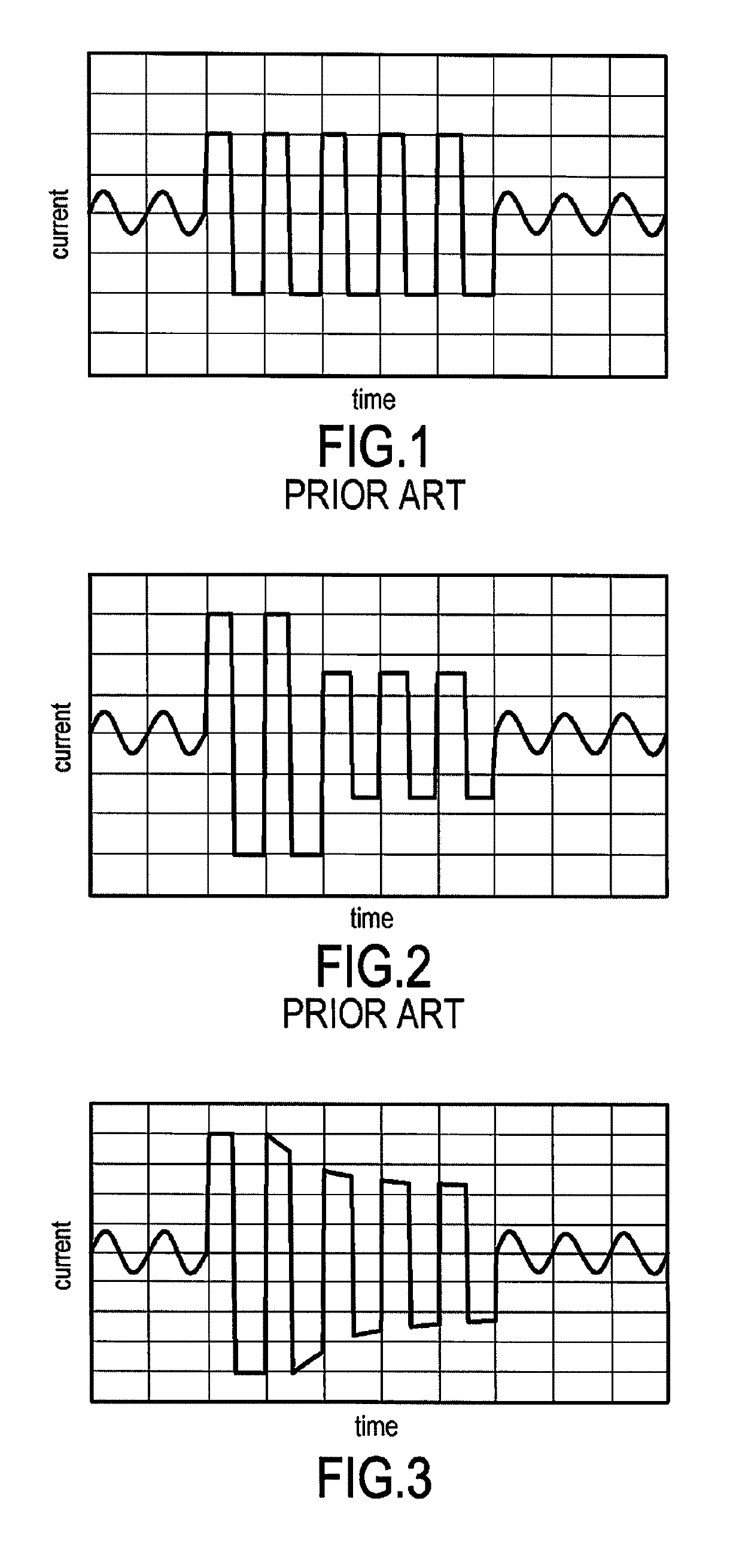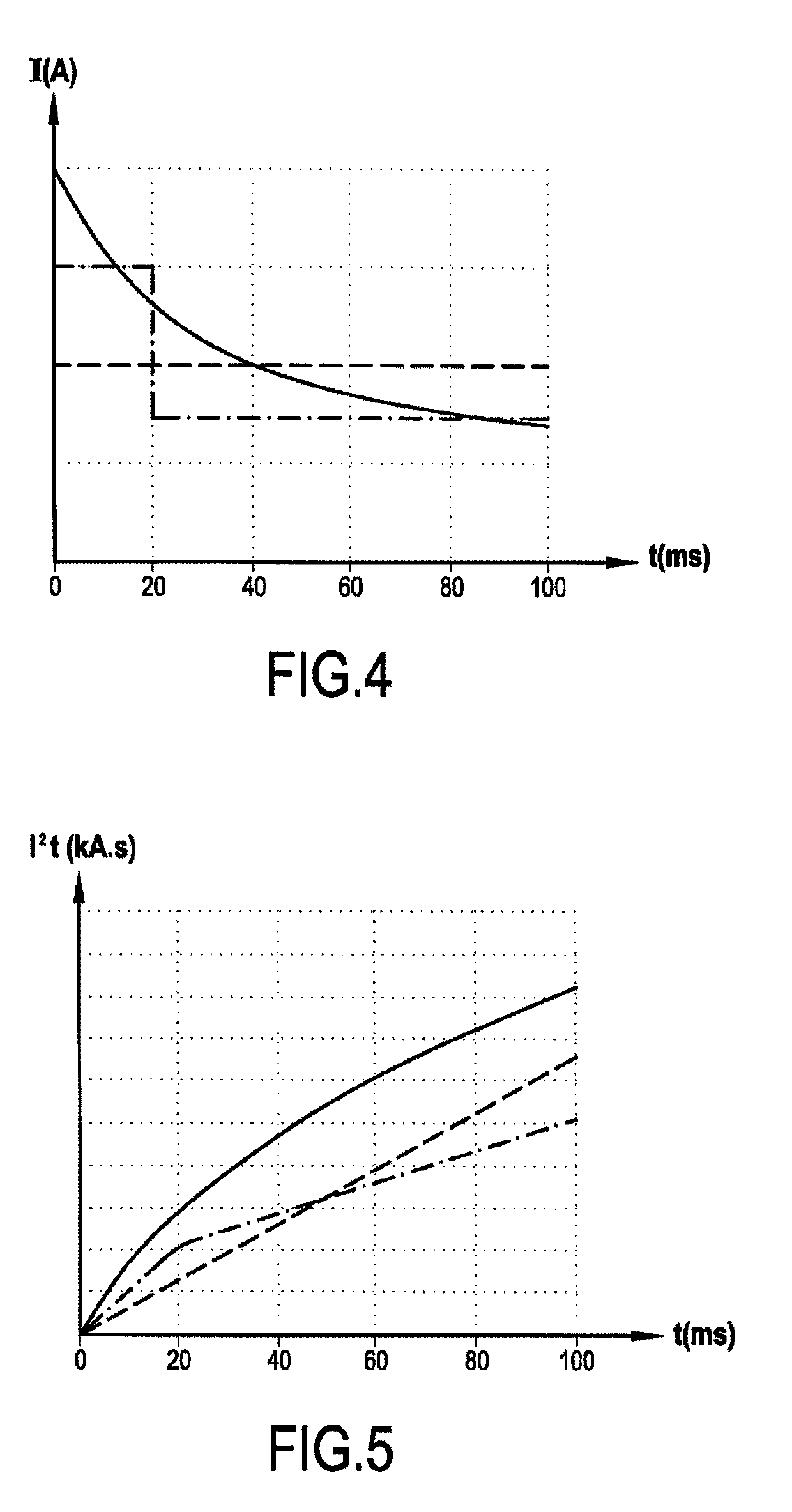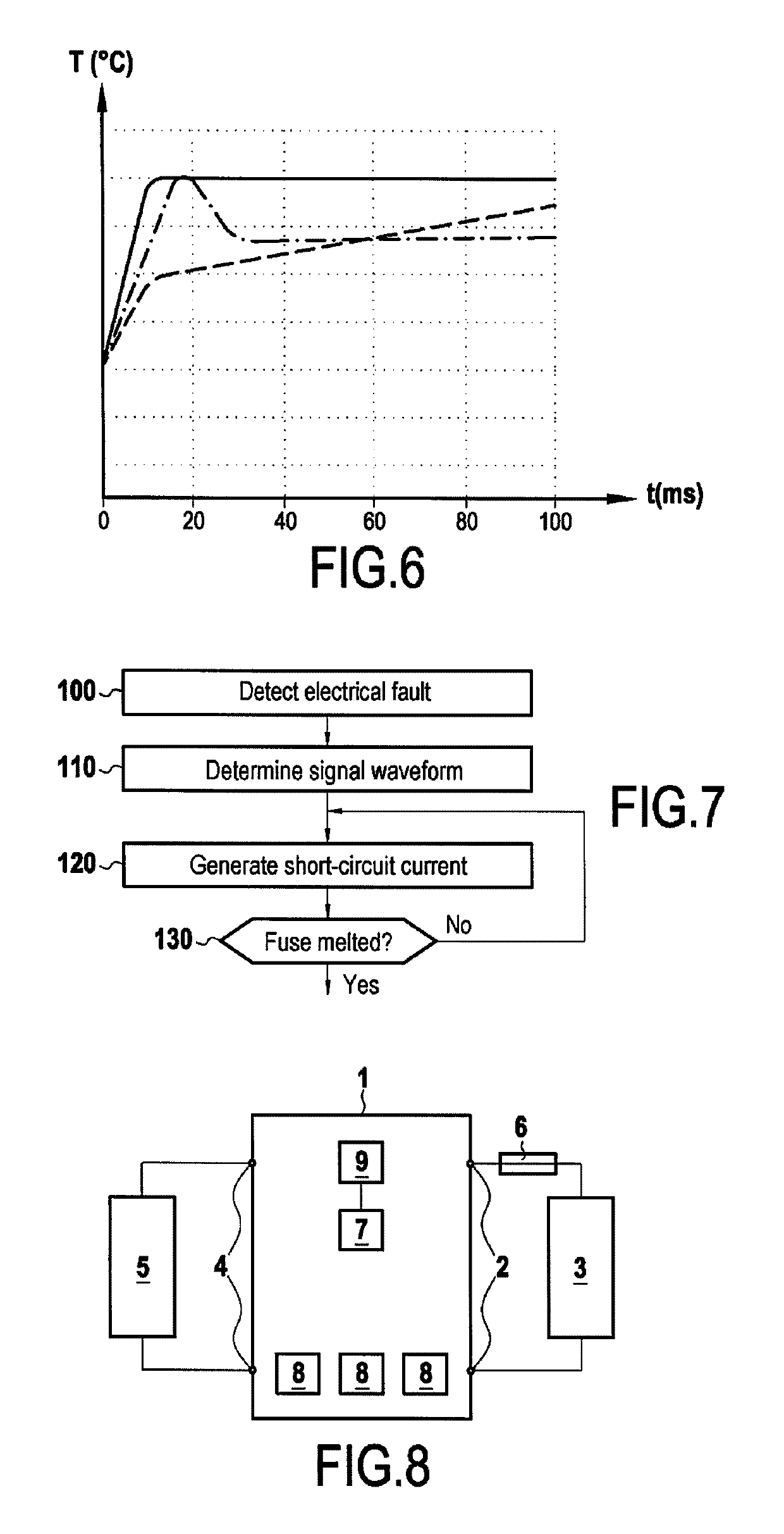Method for generating a short-circuit current for triggering an electrical protection element
a technology of short-circuit current and electrical protection element, which is applied in the direction of emergency protection arrangements for automatic disconnection, electrical apparatus, and arrangements responsive to excess current, can solve the problems of electrical components running the risk of being damaged, not all electrical components can withstand the same maximum current passing through, and the electrical component cannot be completely isolated from the rest of the circuit, so as to achieve the effect of maximizing the magnitude of the short-circuit curren
- Summary
- Abstract
- Description
- Claims
- Application Information
AI Technical Summary
Benefits of technology
Problems solved by technology
Method used
Image
Examples
Embodiment Construction
[0055]FIG. 3 shows an example of an AC signal generated in an implementation of the method of the invention.
[0056]The short-circuit current signal is an AC signal comprising a first period having the form of a squarewave signal with a current amplitude equal to the maximum current amplitude that can be withstood by the electrical components of said power supply device.
[0057]The following periods of the short-circuit signal present a pseudo-square waveform in that the rising and falling fronts are very steep but the crests present a decreasing shape. Periods after the first period thus present an AC signal of current amplitude that decreases as a function of the thermal inertia of said components.
[0058]Thus, for periods after the first period, not only does the amplitude of the AC signal decrease successively from one period to the next, but it also decreases within a single period of the signal, the crests of the pseudo-squarewave signal are not of respective values that are constan...
PUM
 Login to View More
Login to View More Abstract
Description
Claims
Application Information
 Login to View More
Login to View More - R&D
- Intellectual Property
- Life Sciences
- Materials
- Tech Scout
- Unparalleled Data Quality
- Higher Quality Content
- 60% Fewer Hallucinations
Browse by: Latest US Patents, China's latest patents, Technical Efficacy Thesaurus, Application Domain, Technology Topic, Popular Technical Reports.
© 2025 PatSnap. All rights reserved.Legal|Privacy policy|Modern Slavery Act Transparency Statement|Sitemap|About US| Contact US: help@patsnap.com



